Relive Apollo 11’s landing, 47 years ago
https://players.brightcove.net/2097119709001/4kXWOFbfYx_default/index.html?videoId=5042734601001
In the more than 40 years since Apollo ended, we’ve never gone farther.
“I knew I was alone in a way that no earthling has ever been before.”
–Michael Collins
On July 16th, 1969, Apollo 11 was launched. The three crewmembers on board — Neil Armstrong, Buzz Aldrin and Michael Collins — were the third set of people ever to venture beyond low Earth orbit. After Apollo 8 became the first crewed mission to orbit the Moon the year before, Apollo 9 tested all the equipment and modules, while Apollo 10 was the “test run,” orbiting the Moon multiple times before returning to Earth.
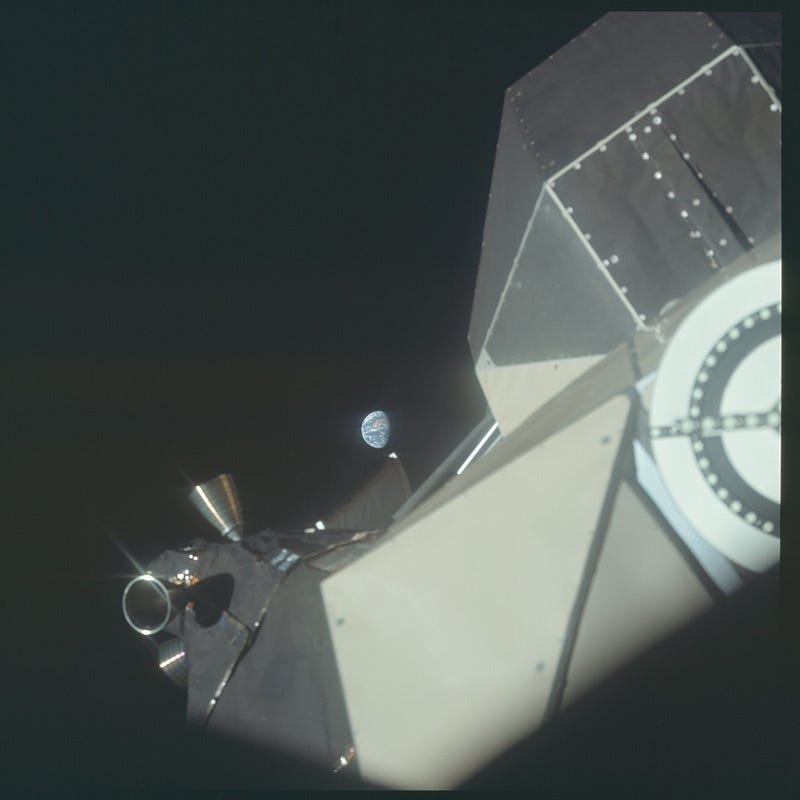
It was a three day journey from our planet to our nearest neighboring world. As the Earth grew more and more distant, the familiar lunar surface grew closer and more detailed. All three crewmembers were treated to spectacular views of the Moon’s craters, valleys and shadowed surface, until that fateful moment when Neil and Buzz would load themselves into the Lunar Module, separating from Michael Collins in the orbiter above.
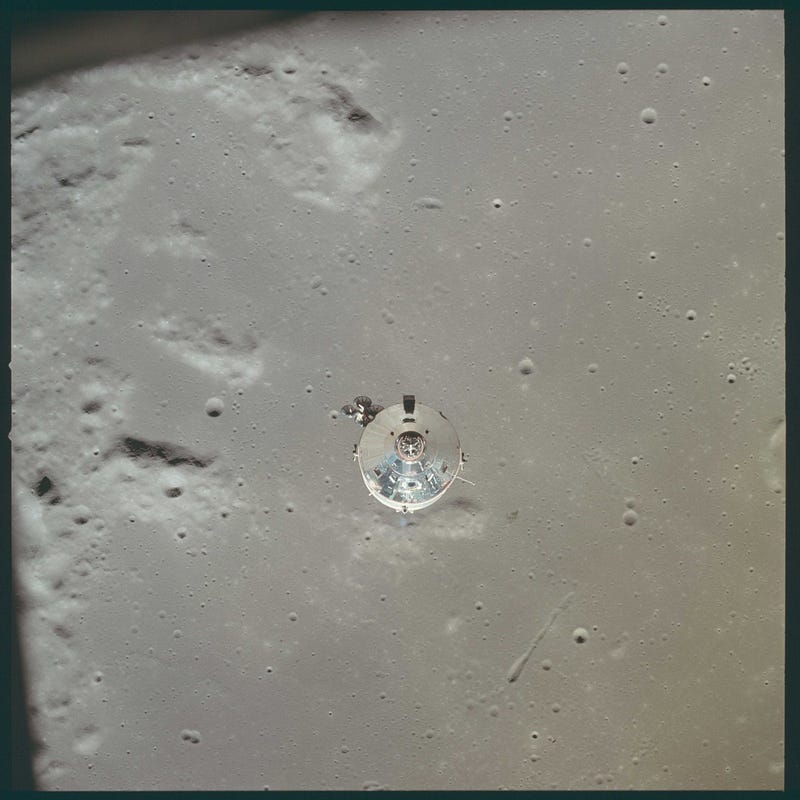
It was a relatively quick, painless journey down to the ground. The landing was soft and right on-target, and when those famous words echoed back to mission control, “The Eagle has landed,” the entire world exploded with joy. For the first time, there were living humans on a world beyond our own. We were about to set foot on the surface of the Moon.

The Lunar Module was a relatively small spacecraft: no bigger than a mid-sized van. Yet it was not only big enough to hold two astronauts, a slew of life support materials and scientific equipment, but also to take hundreds of pounds worth of lunar samples back to Earth.

Many of the most iconic photos of humanity’s journeys beyond Earth come from this mission, and from the photographic handiwork of Neil Armstrong, who was always the most camera-shy of the Apollo astronauts. Particularly iconic are the photographs of Buzz Aldrin with the American flag,
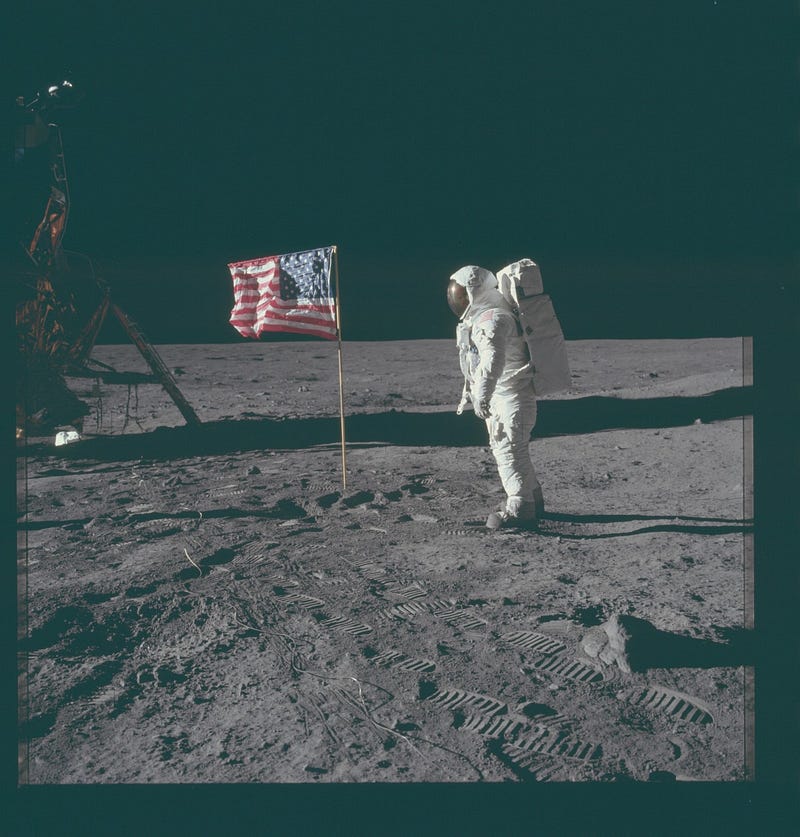
The “boot-print” of Neil’s foot on the thin, dusty lunar regiolith,
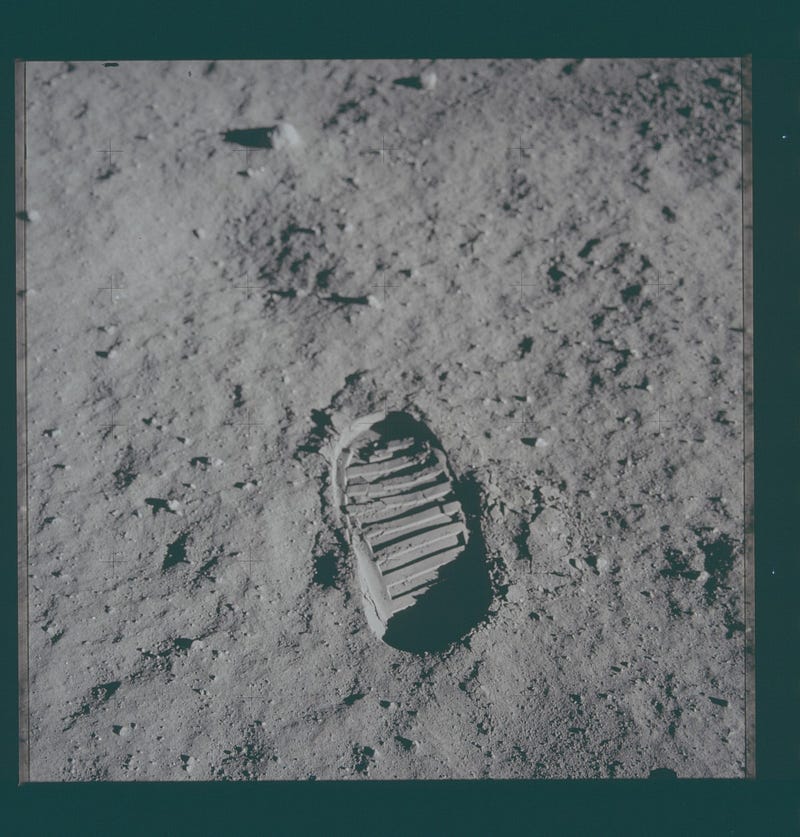
And the reflection of Neil Armstrong in Buzz Aldrin’s helmet: the first lunar selfie of all-time.
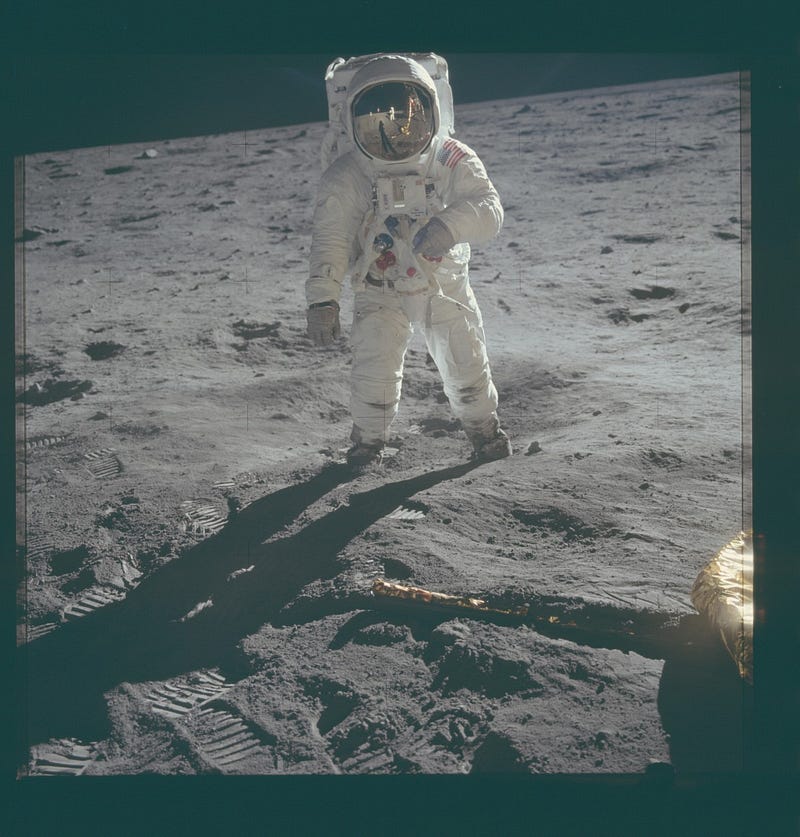
The scientific instruments placed on the Moon included the first seismometer ever installed on another world. Despite only functioning for three weeks before failure, it lasted long enough to record the first seismic activity ever directly observed beyond Earth: the first Moonquakes. The lunar reflectors, on the other hand, are still active today, nearly half a century later, and are among the most indispensable pieces of equipment for measuring the distance to the Moon via lunar laser ranging. Meanwhile, Michael Collins orbited alone, high above the Moon, for 30 complete orbits over the span of nearly 72 hours. In the eyes of many, he was the loneliest human in the Solar System, and the only person not in the photograph below.
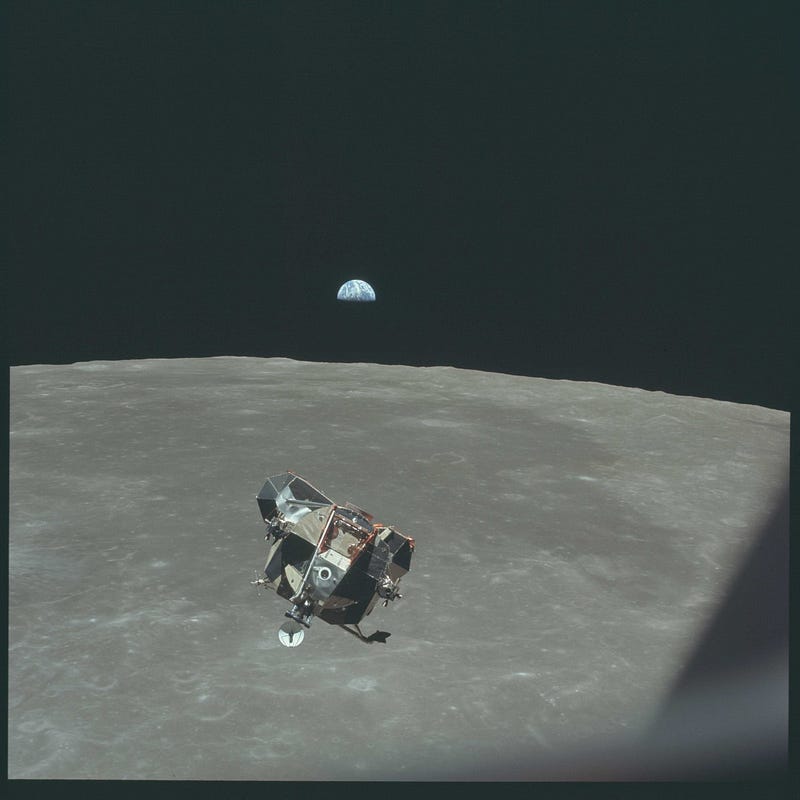
Despite the loneliness, it must have been an incredible sight for him: 30 separate times, he had the opportunity to watch the Earth rise over the limb of the Moon, something that only two dozen people have ever seen, firsthand, with their own eyes.
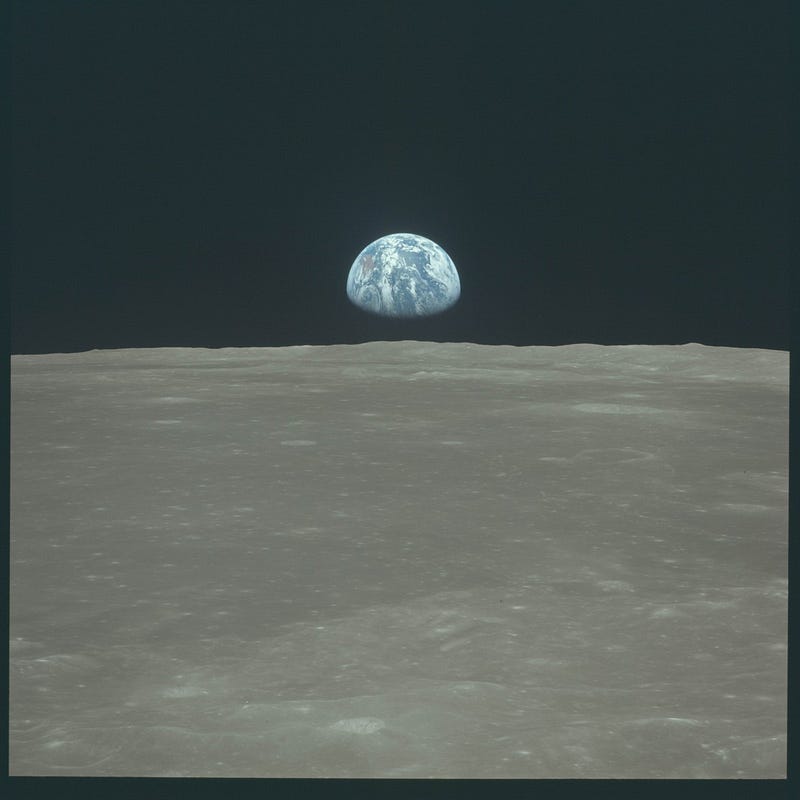
The eight day excursion was the beginning of humanity’s journey beyond our home world. Although we have yet to go farther under our own power than we did in the heyday of the Apollo program, our technology, science, dreams and ambition have only continued to grow. If we put the resources into it, human exploration of Mars , of Jovian and Saturnian satellites, or even of worlds beyond our Solar System might become a reality by the end of the 21st century. On the anniversary of the Apollo landings, it’s up to us to remember: it’s our Universe, too, and it’s up to us to make sure we extend our reach beyond the planet we were born onto.
This post first appeared at Forbes, and is brought to you ad-free by our Patreon supporters. Comment on our forum, & buy our first book: Beyond The Galaxy!





